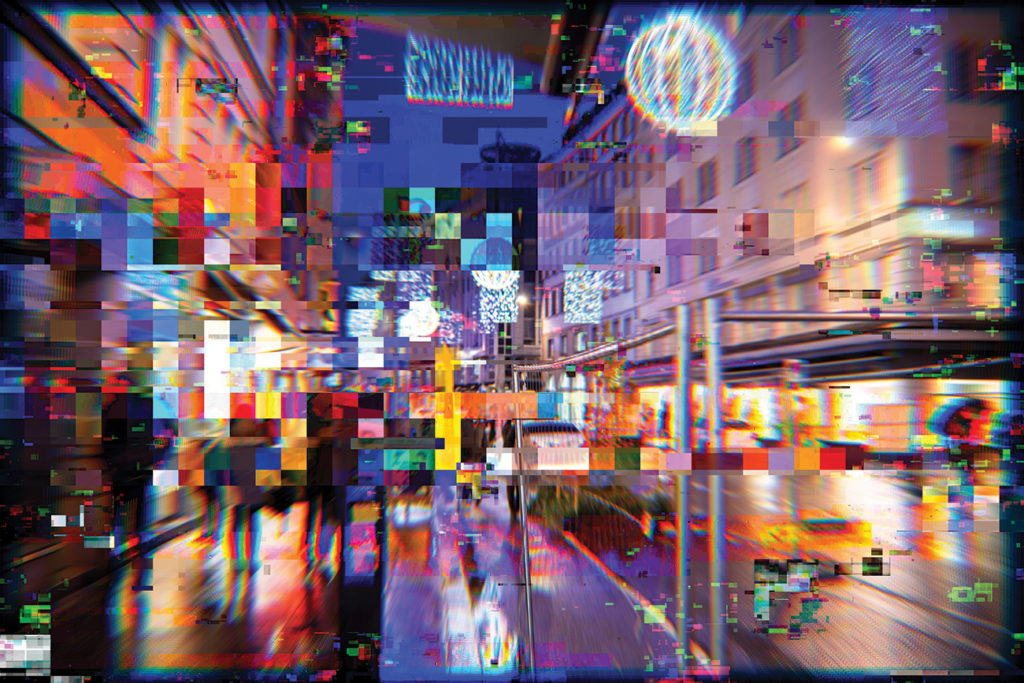And Now the Real World
September 6, 2022

How can students, researchers and practitioners of architecture harness new-age technology to address real-world application pain points?
Student projects often explore abstract, even utopian ideas at the levels of philosophy, form and functionality. This is based on what we are encouraged to do in architecture school—to push the envelope with regards to the meaning of a project, its dynamics with its context and the environment. While this continues to be the creative architect’s primary currency as they transition to practice, real-world application and execution take place at a far more intricate resolution.
In transitioning from a closed, peer-reviewed constructs of an academic setting, the practising architect functions within a complex stakeholder matrix, where the potentials and constraints presented thereby must inform every aspect of the design process. Terms like Web 3.0/the metaverse; gamification; mixed-reality architecture; generative design; open-source design; and robotic/intelligent automation are increasingly finding their way into an evolving architecture, engineering, construction and operation (AECO) industry vocabulary. And it is evident that boundaries between disciplines will only continue to blur as we nurture deeper cultures of cross-collaboration.
The early inculcation of a practice-facing worldview into the fabric of architectural pedagogy will teach students to view projects from the lens of real-world application pain points, and in time, prepare young architects to tackle them using higher-fidelity technology that will be at their disposal. If a project is interpreted as a sequence of co-dependent life cycles, each with its unique workflows, opportunities and constraints, then a fluid brand of specialisation, agnostic solution-making can be encouraged, i.e., aggregated from or across a spectrum of disciplines.
This will allow a student to approach a brief from an object-oriented perspective, innately attuned to deciphering potentials that technology can bring to a project at every life cycle—from feasibility to design to construction.
THE DESIGN LIFE CYCLE
There are a number of technologies, well integrated at early stages of projects, that are also able to profoundly extend their influence throughout the design and construction life cycles.
Generative platforms like Parametric Solutions and TestFit enable teams to shave weeks off from both the site planning and early design development phases by producing innumerable permutations of massing options/floor plans in seconds, specific to site conditions and project requirements.
Using a mix of user input variables and ‘learned’ logic, their procedural algorithms can process for a wide spectrum of crucial parameters including geolocation, project brief, by-laws, ergonomics and climatological factors. Such studies can then help inform the detailed development process with quality data-led design solutions, which are both optimised and buildable.
THE CONSTRUCTION LIFE CYCLE
Workflows deployed during design life cycles intimately inform the execution of projects. Likewise, innovations in construction technology will concurrently influence design decisions, by illuminating potentials and thresholds of building materials that manifest in eventual fabrication.
From additive manufacturing (3D printed layered fabrication) and subtractive manufacturing (hewn from blocks using CNC/laser cutters) to robotics-enabled construction processes, new-age automation technologies assist in rapid prototyping processes for design studies, and are gaining traction as a viable asset on live sites as well.
RELATED: Next-Generation Technologies in Architectural Design
WHAT’S NEXT? TOWARDS A DIGITAL FUTURE
Today, we are at the event horizon of a paradigm-shifting technological event that may irreversibly alter life and lifestyle as we know it—the advent of Web 3.0—a decentralised, democratic, three-dimensional internet. The idea of functional, habitable virtual worlds is fast gaining application traction—straight out of the pages of science-fiction novellas and lived through hyper-sensorial, immersive metaverse architecture.
Accessed through augmented reality (AR), VR and brain computer interface (BCI) devices, when fully integrated into how we live, Web 3.0 will foreseeably render many built typologies of architecture irrelevant.
RELATED: FuturArc Interview with Wendy W. Fok
As the applied distribution and sensorial abilities of Web 3.0 become more sophisticated, we will witness a critical mass of people who will adopt technology that makes their preferred work experience possible.
And if this critical mass is able to acclimatise to achieve the collective output resolution required of them consistently, those of us still working from the confines of brick-and-mortar offices will, in turn, adapt.
[This is an excerpt. Subscribe to the digital edition or hardcopy to read the complete article.]

Anshuman Roy (M. Arch, National University of Singapore, B. Arch, Sir JJ College of Architecture) is an architect, researcher and design theorist based in Mumbai, India. In 2020, Roy co-founded Mothership Future Cities Laboratory, a research and technology development entity in the metaverse architecture space, dedicated to informing and enabling virtual architectures of the future. Mothership consults with experience-driven businesses, helping strategize to bridge the great divide between the .com era and the virgin world of Web 3.0. In the AECO industry-facing capacity, Mothership develops virtual meta-verse twins and intelligent tools that aid with process optimization and analytics at the back-end, and virtual asset development, experiential sales and engagement in the front-end of operations. Roy is Director of Research and Development at Mothership.
1 https://www.designblendz.com/services/feasibility-study
2 https://www.site-solve.co.uk/blog-articles/proptech-toolsfor-land-feasibility/
3 https://www.media.mit.edu/projects/g3p/overview/?utm_medium=website&utm_source=archdaily.com
4 https://arts.mit.edu/object-lesson-3d-ceramicsprinter/?utm_medium=website&utm_source=archdaily.com
5 https://news.mit.edu/2019/new-era-3d-printing-0516?utm_medium=website&utm_source=archdaily.com
6 https://materiability.com/portfolio/the-green-charcoal/
7 https://www.wired.com/story/nimo-planet-nimo-glasses/
8 https://www.analyticsinsight.net/why-ai-counts-as-thebiggest-factor-behind-metaverse-growth/
9 https://www.analyticsinsight.net/meals-in-metaversearbys-buffalo-wild-wings-joining-vr-world/
10 https://www.weforum.org/agenda/2022/02/howmetaverse-actually-impacts-the-environment/
RELATED: Architectural practice in Web 3.0: NFTs and digital real estate

Bio-based construction: What can be done for now?

Read more stories from FuturArc 3Q 2022 Green Awards: Reinterpretation!

To read the complete article, get your hardcopy at our online shop/newsstands/major bookstores; subscribe to FuturArc or download the FuturArc App to read the issues.
Previously Published Commentary
Contact us at https://www.futurarc.com/contact-us for older commentaries.
